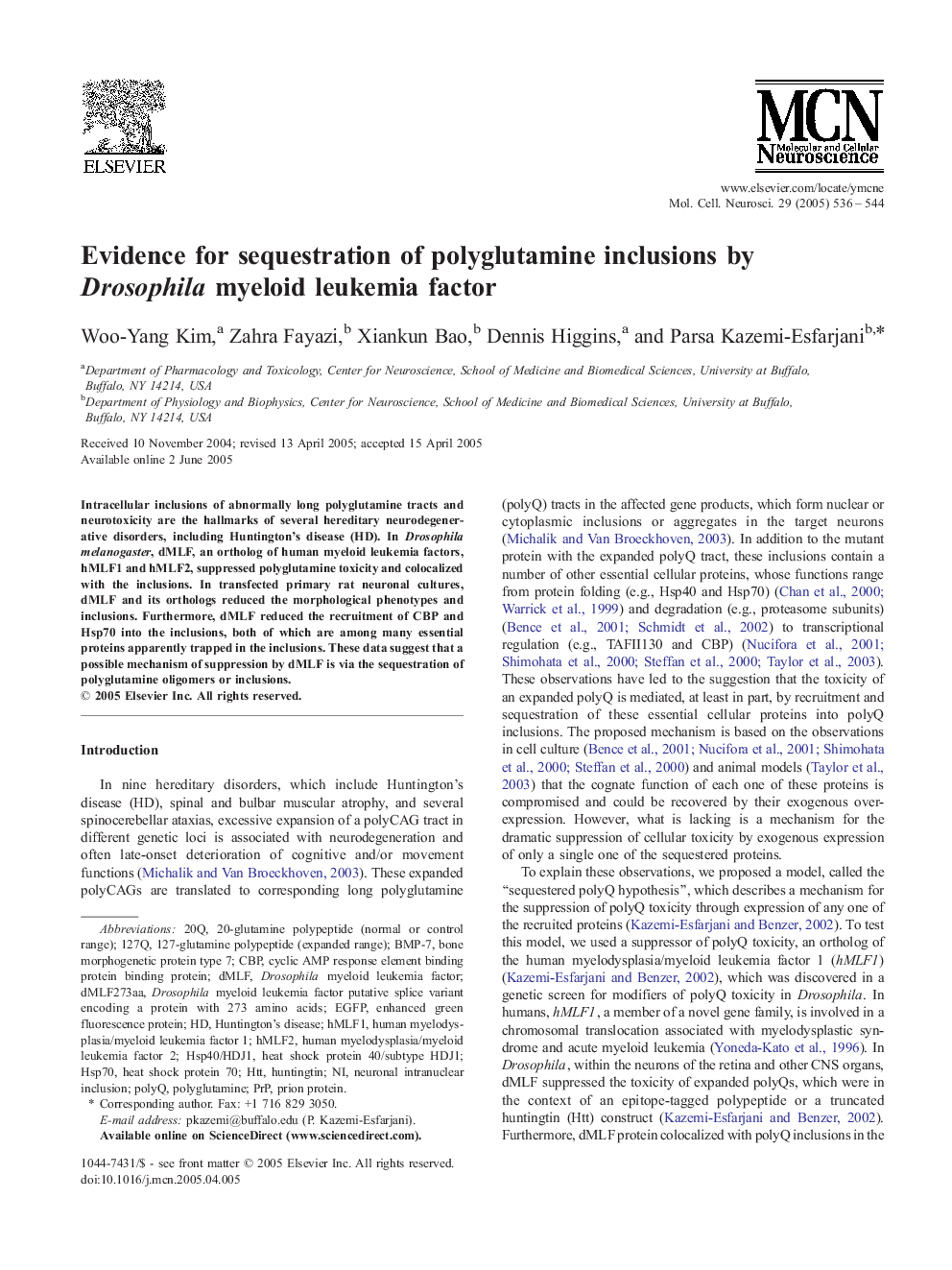| Article ID | Journal | Published Year | Pages | File Type |
|---|---|---|---|---|
| 10956856 | Molecular and Cellular Neuroscience | 2005 | 9 Pages |
Abstract
Intracellular inclusions of abnormally long polyglutamine tracts and neurotoxicity are the hallmarks of several hereditary neurodegenerative disorders, including Huntington's disease (HD). In Drosophila melanogaster, dMLF, an ortholog of human myeloid leukemia factors, hMLF1 and hMLF2, suppressed polyglutamine toxicity and colocalized with the inclusions. In transfected primary rat neuronal cultures, dMLF and its orthologs reduced the morphological phenotypes and inclusions. Furthermore, dMLF reduced the recruitment of CBP and Hsp70 into the inclusions, both of which are among many essential proteins apparently trapped in the inclusions. These data suggest that a possible mechanism of suppression by dMLF is via the sequestration of polyglutamine oligomers or inclusions.
Keywords
Related Topics
Life Sciences
Biochemistry, Genetics and Molecular Biology
Cell Biology
Authors
Woo-Yang Kim, Zahra Fayazi, Xiankun Bao, Dennis Higgins, Parsa Kazemi-Esfarjani,
